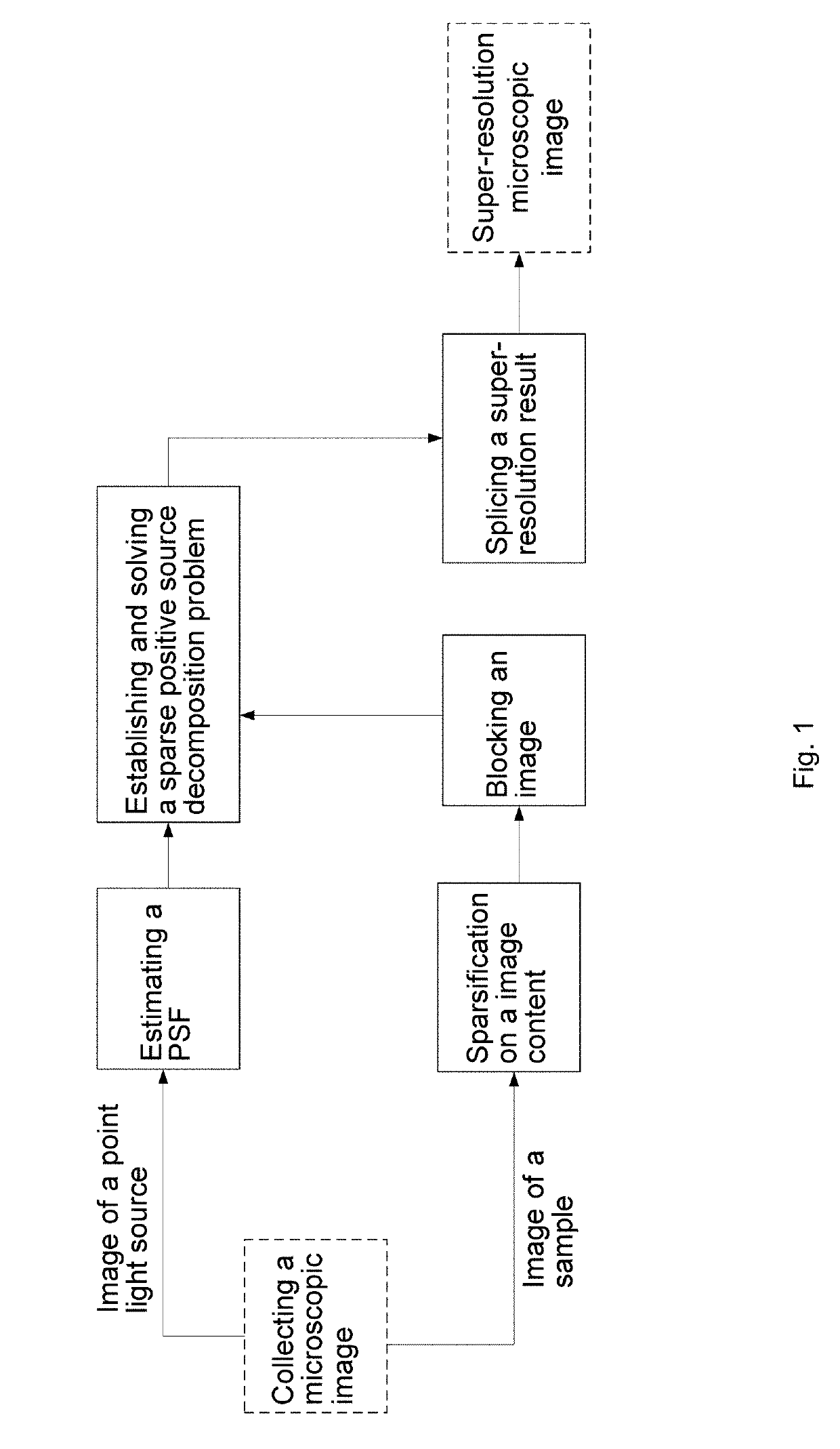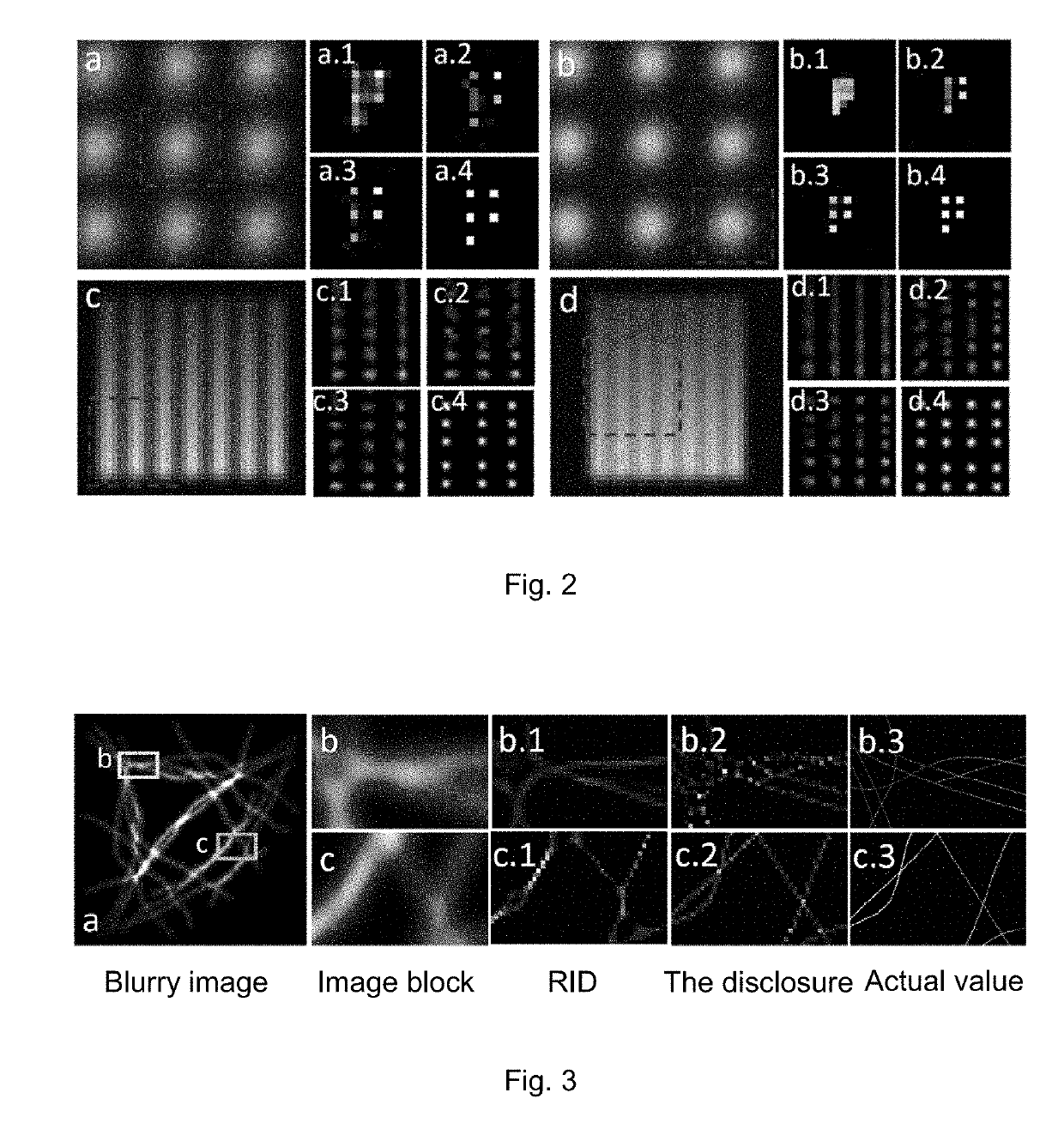Image Deblurring Algorithm Based on Sparse Positive Source Separation Model
a source separation and image deblurring technology, applied in image enhancement, image analysis, instruments, etc., can solve the problems of high photobleaching, time-consuming in large-area imaging, and the inability of ideal optical microscopes to visually distinguish details less, so as to solve the optimization problem more accurately and clear high-resolution images
- Summary
- Abstract
- Description
- Claims
- Application Information
AI Technical Summary
Benefits of technology
Problems solved by technology
Method used
Image
Examples
embodiment 1
[0030]As shown in FIG. 1, an image deblurring algorithm based on a sparse positive source separation model includes the following steps.
[0031]S1: calibration is performed on an optical system.
[0032]S2: sparsification is performed on an image content.
[0033]S3: an imaging matrix A is established and a sparse positive source separation optimized model is solved.
[0034]In the step S2, when multiple pieces of continuous microscopic images are available, the main purpose of the sparsification on the image content is to remove background interference, an interested sparse structure is viewed as a foreground, the background interference is viewed as a background, and the sparsification is performed on the images using sparse low-rank matrix decomposition. When only one piece of blurry microscopic image is available, the main purpose of the sparsification on the image content is to remove a direct-current component in the image, including a spontaneous duration signal from an imaging device d...
PUM
 Login to View More
Login to View More Abstract
Description
Claims
Application Information
 Login to View More
Login to View More - R&D
- Intellectual Property
- Life Sciences
- Materials
- Tech Scout
- Unparalleled Data Quality
- Higher Quality Content
- 60% Fewer Hallucinations
Browse by: Latest US Patents, China's latest patents, Technical Efficacy Thesaurus, Application Domain, Technology Topic, Popular Technical Reports.
© 2025 PatSnap. All rights reserved.Legal|Privacy policy|Modern Slavery Act Transparency Statement|Sitemap|About US| Contact US: help@patsnap.com


